|
The hardening U.S.-Mexico border of the 2010s has been increasingly defined by walls and division, but symbolic bridges continue to tie the two countries’ people together. One such recent link is the newest bridge on the U.S.-Mexican border, the Cross Border Xpress (CBX) linking the Tijuana International Airport (TIJ) in Mexico with a passenger check-in terminal in San Diego, California, making TIJ the only airport in the world with terminals in two different countries. Open since 2015, the CBX (aka, “La Puerta de las Californias”) symbolizes the two countries’ ability (and inability) to cooperate. Grab onto your luggage as we rush across the CBX’s history to our flight in Tijuana! QUICK TAKEAWAYS
A History of TurbulenceThe CBX has a long history. The location of the Tijuana International Airport (TIJ) only a few feet south of the border has long tantalized business leaders because of the economic possibilities imagined in facilitating cross-border passenger and cargo traffic between the Californias. The Mexican federal government first opened the modern passenger terminal at TIJ in 1970 over what used to be the maize, bean, and barley fields of the Ejido Tampico cooperative farm. [1] Plans to use the Tijuana Airport for U.S. air transport needs emerged on January 25, 1989, when the San Diego Association of Governments (SANDAG) proposed developing a binational airport facility across TIJ at Otay Mesa to relieve the traffic at the city’s main downtown airport at Lindbergh Field (SAN). Proponents of what became the “TwinPorts” proposal argued that a binational airport could strengthen San Diego and Tijuana’s economic growth as Pacific Rim cities and even compete with Los Angeles International Airport (LAX) for Trans-Pacific passenger and cargo traffic The proposal initially had the existing Tijuana Airport terminal serving Mexican and U.S. travelers who would arrive through a new 12,000-foot runway in the U.S. side capable of receiving large jumbo jets. U.S. Customs agents would facilitate the movement of U.S.-bound passengers and cargo from the Tijuana facility. In the original proposal TIJ would have been run by both Mexico and the U.S. [2] Officials at TIJ, however, only learned about SANDAG’s proposal after reading about it in U.S. newspapers. In fact SANDAG did not consult with Mexican stakeholders when it developed the TwinPorts idea. Mexico’s transportation secretary called the idea “madness.” Then (and now) the only other “binational” airports in the world were Geneva and Basel airports along the French-Swiss border. [3] TwinPorts was modified so that a new passenger terminal was built in Otay Mesa in addition to the new jumbo jet runway. The existing Tijuana terminal would be connected to U.S. facilities via a cross-border taxiway. Though managed jointly, the Mexican and U.S. terminals would be separate and have their own customs facilities. [4] However, Tijuana developers and their government friends opposed having a U.S. airport in Otay Mesa which could take business away from their airport. TIJ’s promoters preferred for it to be expanded, remain fully under Mexican control, and to open a private border crossing for U.S. travelers’ convenience. [5]
A variety of problems delayed the new international bridge from taking off, including changes TIJ’s administration when the Mexican government sold the facility to private investors (Grupo Aeroportario del Pacifico or GAP), disputes over legal title of the airport’s land, and – most dramatically –discovery of drug smuggling tunnels near the property. During the TIJ's initial expansion between 1965-1970, the Mexican government condemned the 790 acre/320 hectare Ejido Tampico without compensating its ejidatarios (communal land-holders). By 2000 the ejidatarios valued their prime location land at $2.8 billions pesos ($294 million in U.S. dollars). The ejidatarios occupied the portion of the ex-Ejido Tampico which was not yet developed by the airport, in time leasing the land to truck companies. [8] Organized crime, particularly Joaquín “Chapo” Guzmán’s Sinaloa Cartel, began using the ex-ejido’s truck yards to construct drug-smuggling tunnels into the U.S. The May 31, 1993, discovery of a half-completed 65 foot-deep, 1,452 foot-long tunnel with electricity and air conditioning was the first of many discovered near the future CBX. Such discoveries greatly complicated the binational terminal and bridge project. [10] Despite all this turbulence, TIJ continued promoting a binational terminal and bridge. The Chicago-based Equity Group Investments (EGI) firm announced its interest in developing the terminal in 2006, eventually purchasing of portions of the Martinez Ranch Industrial Park in 2008 for $34.5 million U.S. dollars. EGI and its partners, including Tijuana Airport owners Grupo Aeroportario del Pacifico, formed Otay-Tijuana Venture Limited Liability Company to construct and manage the new bridge and terminal. After 6 years of planning, the Cross-Border Xpress (or “Puerta de las Californias” in Spanish) began construction in June 2014. [11]
Legorreta’s CBX is defined by sharp, but simple geometric shapes and colors…. …such as the CBX bridge itself. It’s long horizontal windows represent the bicultural links between the Californias (hence its “Puerta de las Californias” name). [13] The CBX terminal and bridge's opening is historic for the U.S.-Mexican border and for the world at large. Although two other binational airports exist along the Swiss-French border in Geneva and Basel, TIJ is the only airport in the world with terminals in two different countries. How to Catch a Flight in a Binational AirportNow that the CBX/Puerta de las Californias’ turbulent history has cleared, its time to catch our flight in TIJ. Our hurried walk to our flight will take us from the ticketing terminal in Otay Mesa, across a bridge crossing the border, and past Mexican immigration and security checks to our gate. Upon returning from our trip we will mostly follow the same route back. TIJ’s CBX terminal is much smaller and less-imposing than most major airports’ facilities. Parking at the CBX is currently $15-18 per day, but is only steps from the terminal. The bustle of travelers becomes apparent inside. Before entering CBX’s international bridge, travelers must purchase a separate ticket to cross into Mexico and back from self-service kiosks. A roundtrip in 2019 costs $30. A duty-free store greets us inside the CBX’s secure area...but we have a flight to catch in the next country. Turning south, we follow a long hallway towards Mexico. We’re in a hurry, but we can’t miss this sight – the U.S.-Mexico border runs through the inside of the bridge! According to the #CBXperience, visiting Mexico means drinking margaritas on the beach. All along the border plaques like this indicate the exact spot where the United States of America and the United Mexican States meet. The mood outside and underneath is slightly different, however. Photo by Mike Rightmire, courtesy Riverside Press-Enterprise. [18] Walking further we finally enter the main TIJ terminal. From Tijuana, travelers can reach destinations in Baja California, across Mexico, and as far away as Shanghai. What a difference from when this was the Ejido Tampico’s farmland. TIJ’s spacious interior and gate-side stores. Do we need to pick up anything for our flight? After our economical trip from TIJ, we must retrace our steps through the CBX. Although some of the signage can be confusing, the CBX entryway is next to the airport's baggage claim. After presenting our CBX and airline tickets on the Mexican side, we reenter the CBX’s secure area. This sign greets us before walking up to the international bridge. A long corridor now takes us north to the U.S. We’re crossing the border again! But if we want a proper selfie we must stand on on top of the footprints. For the #CBXperience, visiting California, U.S.A., means surfing, bike riding, and visiting Disneyland. The CBX/Puerta de las Californias is the only part of the U.S.-Mexico border where the boundary crosses the inside of a building. We are back in the California terminal! Rental cars are available for travelers arriving through the CBX. With our bags in hand, we exit onto an outdoor patio with food trucks and pick-up spots for shuttle vans. The U.S.-Mexican border wall marks the edge of the CBX terminal. DepartureTime will tell how successful the CBX is in nabbing the estimated 2.6 million TIJ passengers who continue their journey northward into the U.S., but its success in tying Mexico and the U.S. closer together is already a win in this age of tightening borders. Despite a turbulent take off, TIJ’s transformation into a binational airport through the CBX/Puerta de las Californias symbolizes what the modern U.S.-Mexican border can be. [19] Wait, did we forget something on the plane? NOTES:[1] Matilde Perez U., “Ejidatarios exigen pago justo por tierra expropiada en BC,” La Jornada (June 17, 2002), (https://www.jornada.com.mx/2002/06/17/010n1pol.php?origen=politica.html).
[2] Preston Turegano, “3 sites urged for Lindbergh move,” San Diego Evening Tribune (Jan. 25, 1989): B-1; “Aeropuerto Internacional de Tijuana,” (https://www.mexicoenfotos.com/antiguas/baja-california/tijuana/aeropuerto-internacional-de-tijuana-MX15153858330046) and “Aeropuerto Internacional de Tijuana,” México en Fotos (https://www.mexicoenfotos.com/antiguas/baja-california/tijuana/aeropuerto-internacional-de-tijuana-MX14982668209849). [3] Greg Gross and R.B. Brenner, “Effort will start to sell Mexico on 2-nation airport,” San Diego Union (Feb. 6, 1989): B-1; Ethan Epstein, “How San Diego Built a Bridge Over the Wall,” Politico (Feb. 16, 2017), (https://www.politico.com/magazine/story/2017/02/san-diego-bridge-border-wall-airport-tijuana-214788). [4] Nancy Cleeland and Lori Weisberg, “TwinPorts plan gets lift from Mexico,” San Diego Union (May 30, 1991): A-1; Jim Michaels, “Customs hedges on TwinPorts – Smuggling threat an early concern,” San Diego Evening Tribune (July 10, 1991): A-1. [5] Fernando Romero, “Binational airport runs into Tijuana turbulence,” San Diego Evening Tribune (June 20, 1991): A-1; Rneiders, “San Diego TwinPorts airport proposal 1991,” Wikimedia Commons (https://commons.wikimedia.org/wiki/File:San_Diego_TwinPorts_airport_proposal_1991L.jpg). [6] Greg Moran and Lori Weisberg, “TwinPorts plan doesn't fly with South Bay critics,” San Diego Union (May 31, 1991): B-1; John McLaren, “Councilmen clash over TwinPorts,” San Diego Evening Tribune (July 30, 1991): B-1; Ernesto Portillo, “TwinPorts idea fought in Tijuana,” San Diego Union (Aug.14, 1991): B-1; S. Lynne Walker, “Mexico vetoes TwinPorts – Stunned city officials to cancel Otay building ban,” San Diego Union-Tribune (October 2, 1993): A-1; Mark Arner, “City Council votes to lift Otay Mesa moratorium – Transborder Airport project formally dead,” San Diego Union-Tribune (Nov. 9, 1993): A-1. By the time the Mexican government formally announced its opposition to the TwinPorts proposal, SANDAG and the U.S. Federal Aviation Administration had spent $660,000 in studies for the project. [7] “Cross Border Air Terminal,” South County Visioning Project, (July 1, 2013), (https://scedcvisioning.wordpress.com/2013/07/01/cross-border-air-terminal/). [8] During the 2000 presidential elections in Mexico, Vicente Fox of the Partido Accion Nacional (PAN) promised the ex-Ejido Tampico ejidatarios to compensate them for their lost lands. However, once in office President Fox’s government insisted in paying the ejidatarios only $1.2 million pesos ($125,000 U.S. dollars) which was the land’s value in 1991. According to one of Fox’s ministers, the ejidatarios’ $2.8 billion pesos claim would have “an irreparable effect on the federal budget.” Matilde Perez U., “Ejidatarios exigen pago justo por tierra expropiada en BC,” La Jornada (June 17, 2002), (https://www.jornada.com.mx/2002/06/17/010n1pol.php?origen=politica.html). [9] Image in “Since 1990, law enforcement officials have discovered more than 140 tunnels underneath the U.S. border,” San Diego Union-Tribune (Oct. 31, 2013), (https://www.sandiegouniontribune.com/news/border-baja-california/sdut-border-tunnels-2013oct31-htmlstory.html). [10] “Since 1990, law enforcement officials have discovered more than 140 tunnels underneath the U.S. border,” San Diego Union-Tribune (Oct. 31, 2013), (https://www.sandiegouniontribune.com/news/border-baja-california/sdut-border-tunnels-2013oct31-htmlstory.html). [11] “Otay Tijuana Venture, LLC Announces Unprecedented Border Crossing Between San Diego and the Tijuana International Airport Breaks Ground,” BusinessWire (July 14, 2014), (https://www.businesswire.com/news/home/20140714006099/en/Otay-Tijuana-Venture-LLC-Announces-Unprecedented-Border). Part of the negotiations involved determining the funding for U.S. Customs and Border Protection (CBP) officials to operate the border crossing itself. Ultimately Otay-Tijuana Venture LLC agreed to fund CBP’s operations at the CBX since, unlike the other U.S.-Mexico border crossings, the terminal and bridge were a private commercial business. At the time of all this EGI owned Tribune Publishing, parent company of the Los Angeles Times and Chicago Tribune. [12] Eleanor Gibson, “Legorreta defies Trump wall proposal with bold purple bridge across US-Mexico border,” Dezeen (Nov. 1, 2016), (https://www.dezeen.com/2016/11/01/cross-border-xpress-cpx-bridge-terminal-otay-usa-tijuana-mexico-architecture-legorreta/). [13] Eleanor Gibson, “Legorreta defies Trump wall proposal with bold purple bridge across US-Mexico border,” Dezeen (Nov. 1, 2016), (https://www.dezeen.com/2016/11/01/cross-border-xpress-cpx-bridge-terminal-otay-usa-tijuana-mexico-architecture-legorreta/); “OTAY Cross Border Xpress / LEGORRETA,” ArchDaily (Dec. 15, 2016), (https://www.archdaily.mx/mx/801072/otay-cross-border-xpress-legorreta). [14] Lou Hirsch, “S.D., Tijuana Plan a Tourism Team Effort,” San Diego Business Journal (April 24, 2015), (https://www.sdbj.com/news/2015/apr/24/sd-tijuana-plan-tourism-team-effort/). [15] “Mexican and U.S. Officials Inaugurate Cross Border Xpress (CBX) – The Tijuana Airport Terminal – In San Diego,” U.S. Embassy and Consulates in Mexico (April 7, 2016), (https://mx.usembassy.gov/mexican-and-u-s-officials-inaugurate-cross-border-xpress-cbx-the-tijuana-airport-terminal-in-san-diego/). [16] Eleanor Gibson, “Legorreta defies Trump wall proposal with bold purple bridge across US-Mexico border,” Dezeen (Nov. 1, 2016), (https://www.dezeen.com/2016/11/01/cross-border-xpress-cpx-bridge-terminal-otay-usa-tijuana-mexico-architecture-legorreta/). [17] “OTAY Cross Border Xpress / LEGORRETA,” ArchDaily (Dec. 15, 2016), (https://www.archdaily.mx/mx/801072/otay-cross-border-xpress-legorreta). [18] Photo by Mike Rightmire in Mary Jo Fisher, “These 10 steps on how to fly to Mexico by crossing border into Tijuana airport will save you money,” The Press-Enterprise (Riverside, CA), (May 4, 2017), (https://www.pe.com/2017/05/04/flying-to-mexico-by-crossing-the-border-at-tijuana-first). [19] Elliot Spagat, “California's Newest Airport Terminal Extends to Mexico,” NBC Bay Area (Dec. 7, 2015), (https://www.nbcbayarea.com/news/california/Tijuana-San-Diego-California-Airport-Mexico-360787851.html). #Tijuana #CBX #CBXperience #SanDiego #BajaCalifornia #California #USMexicoBorder #Border #Legorreta #PuertaDeLasCalifornias #OtayMesa
3 Comments
Danny
9/5/2019 17:51:15
Fascinating! I never knew this existed.
Reply
9/7/2019 15:04:44
Thank you for your comment - I hope more people get to explore the CBX in the coming years
Reply
Leave a Reply. |
Carlos Parra
U.S.-Mexican, Latino, and Border Historian Archives
January 2021
Categories
All
|
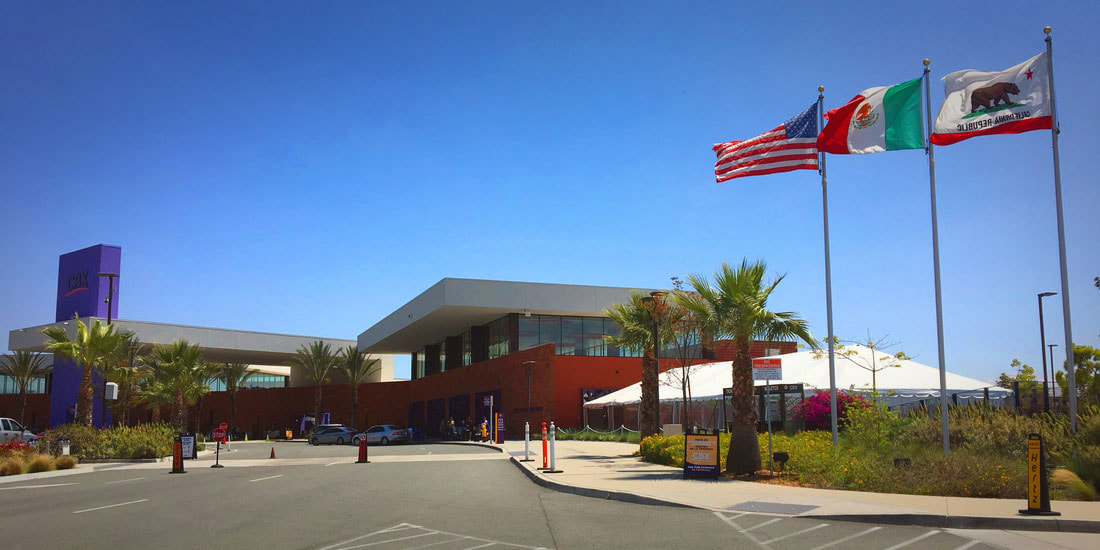
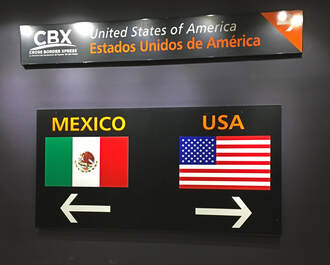
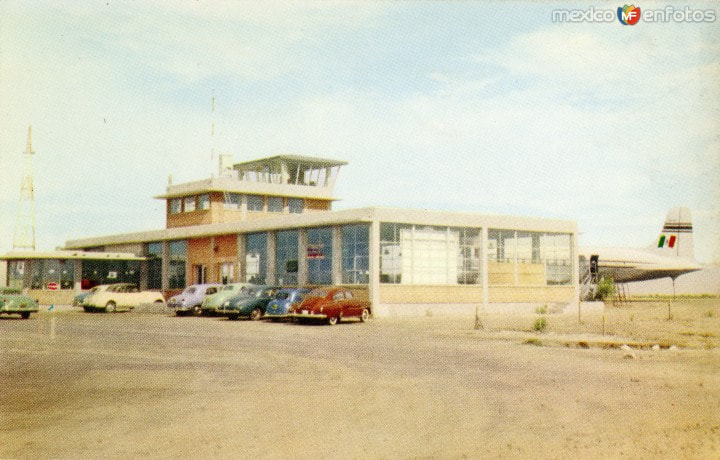
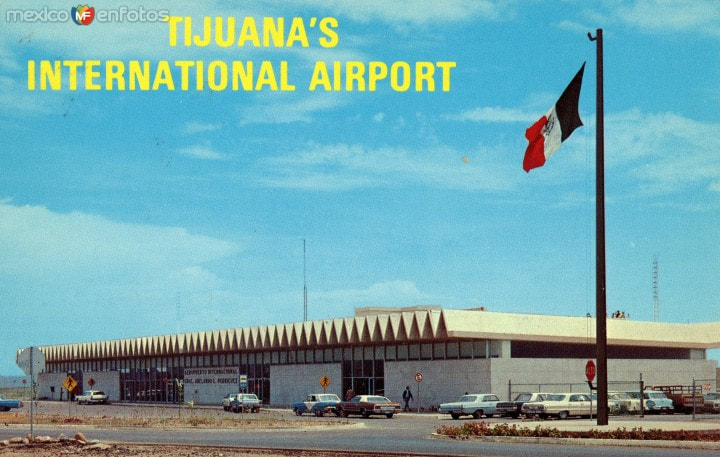


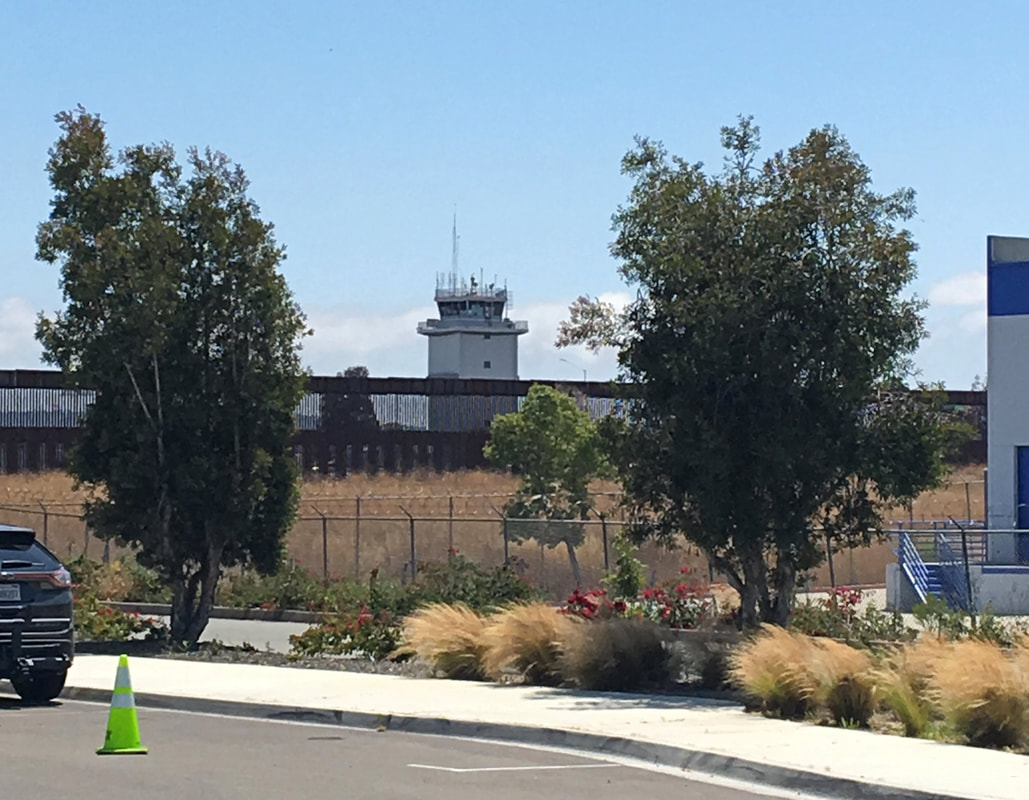


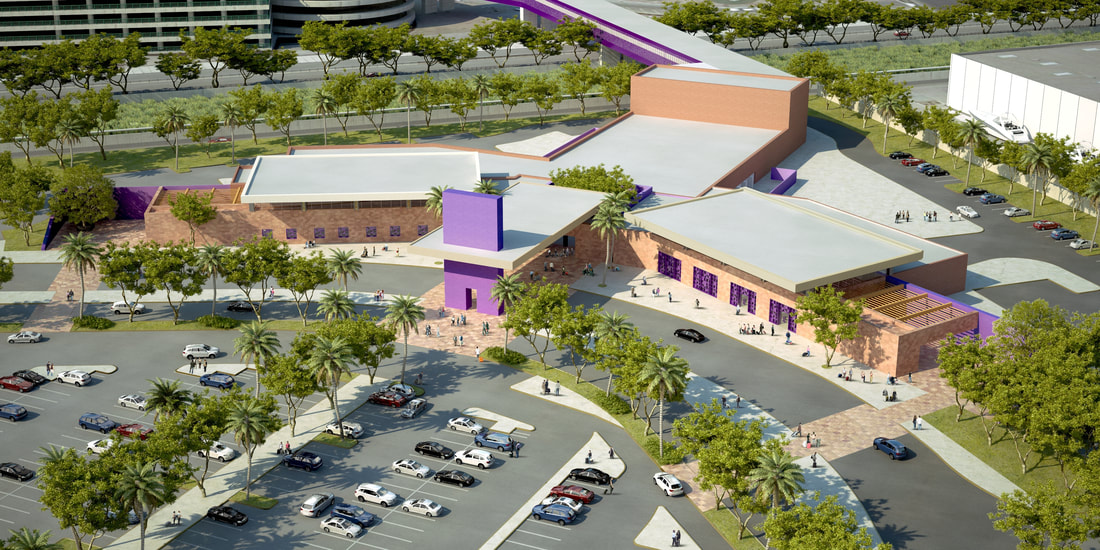




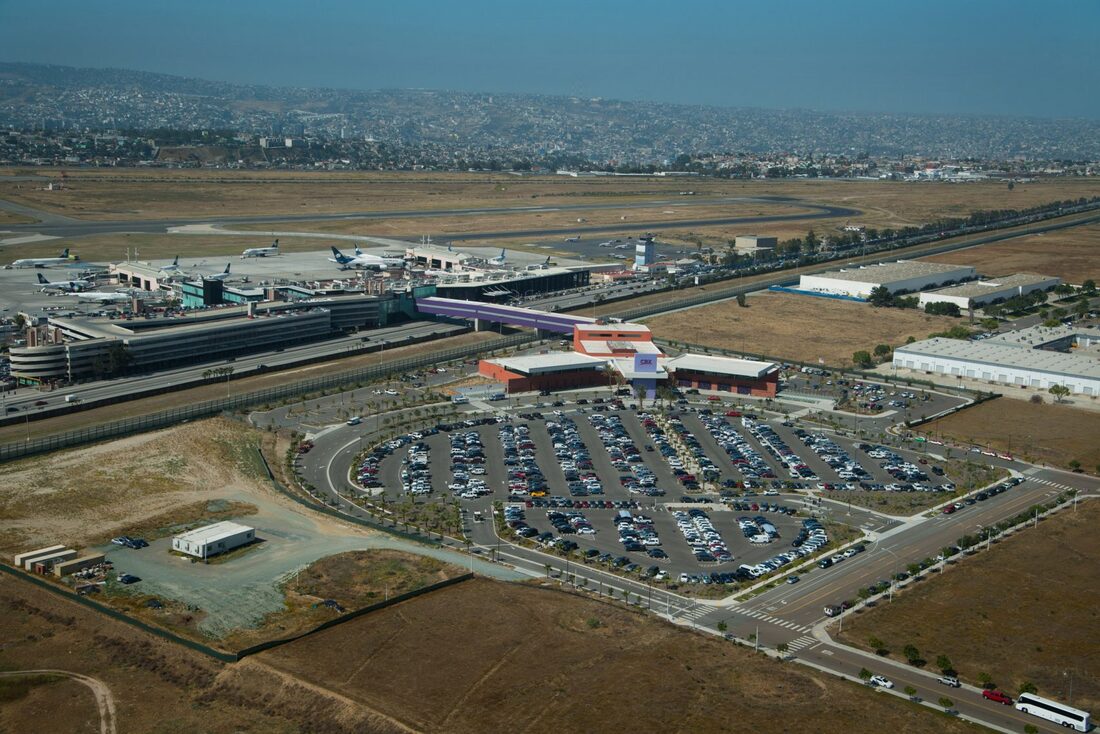












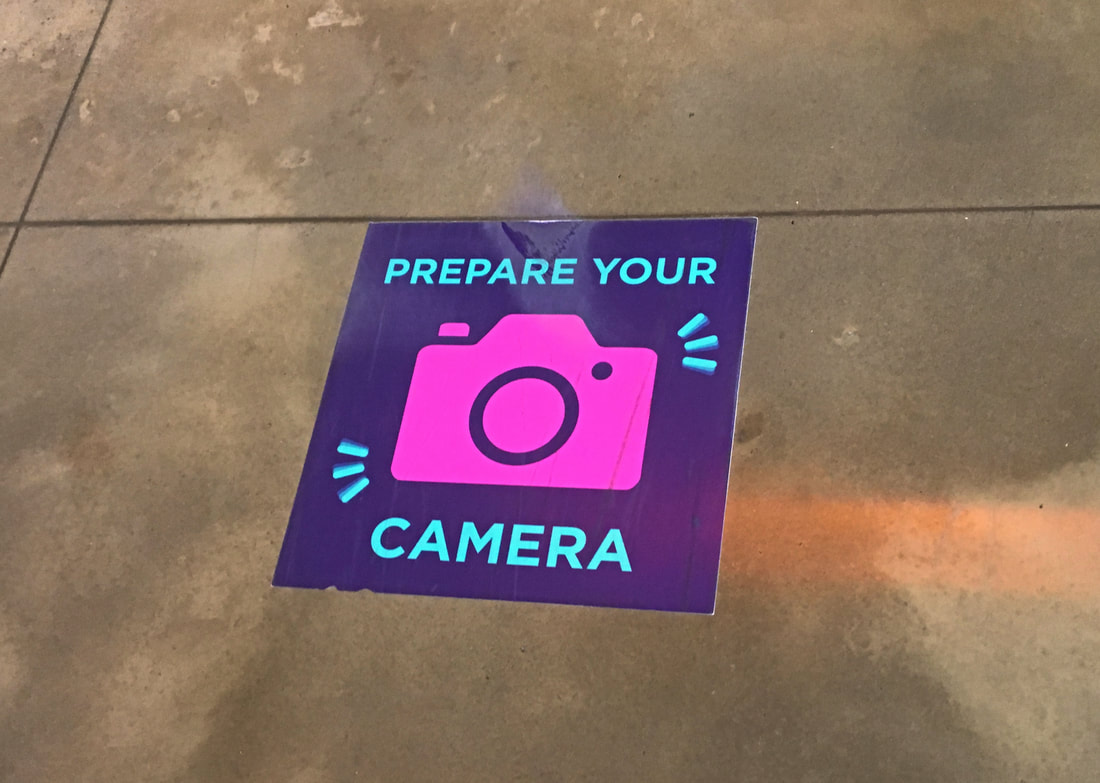


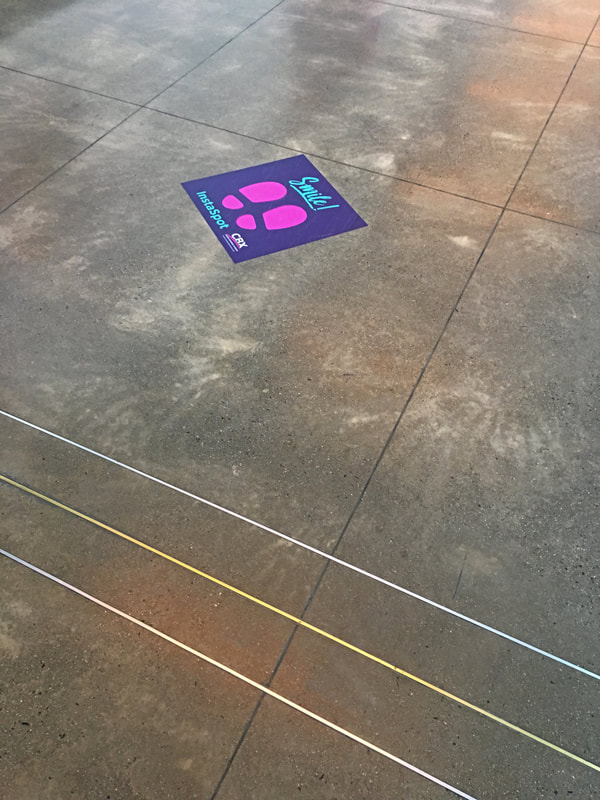


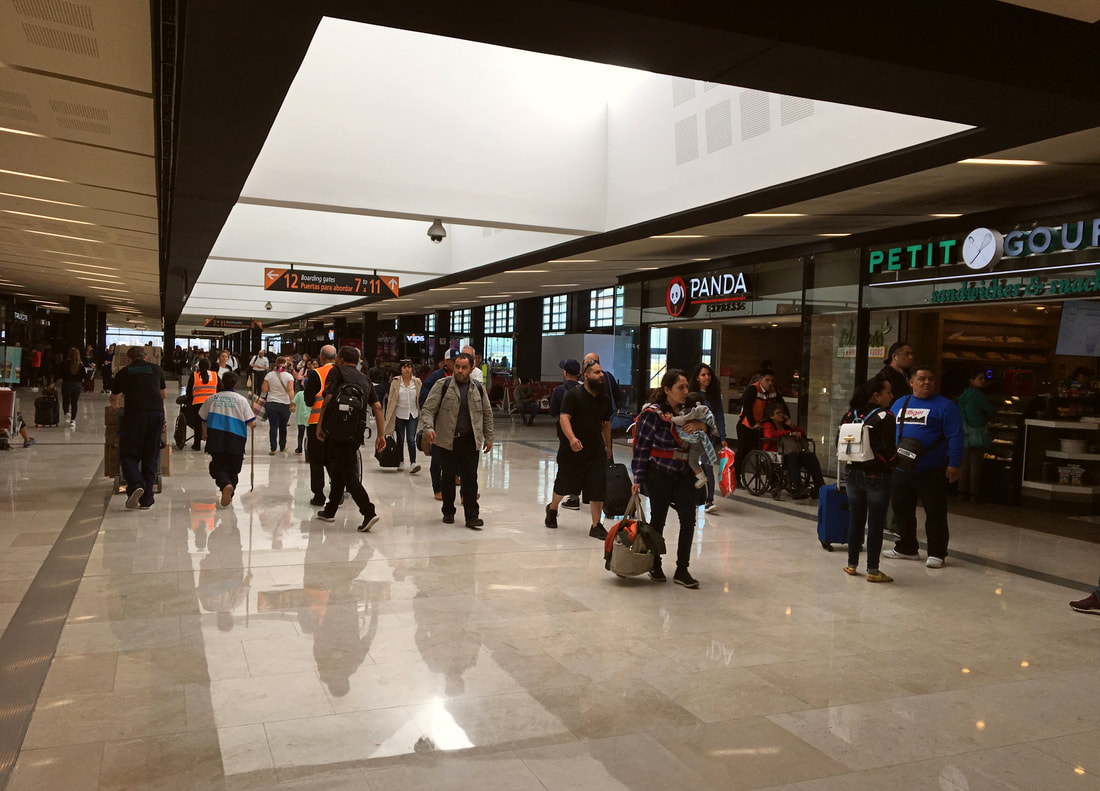













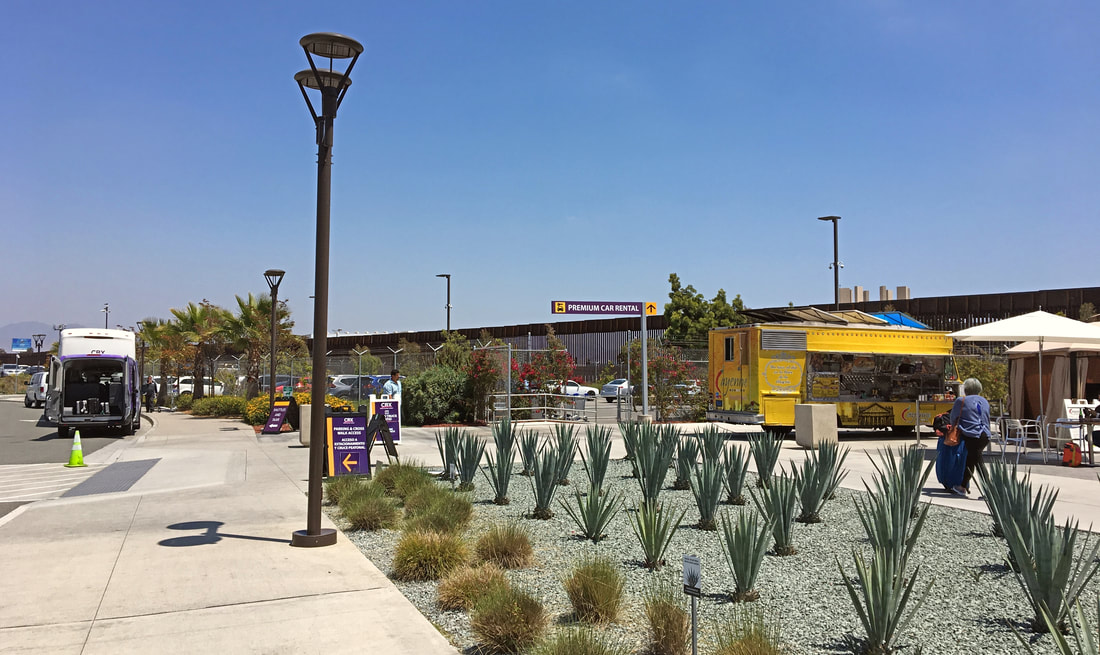

 RSS Feed
RSS Feed